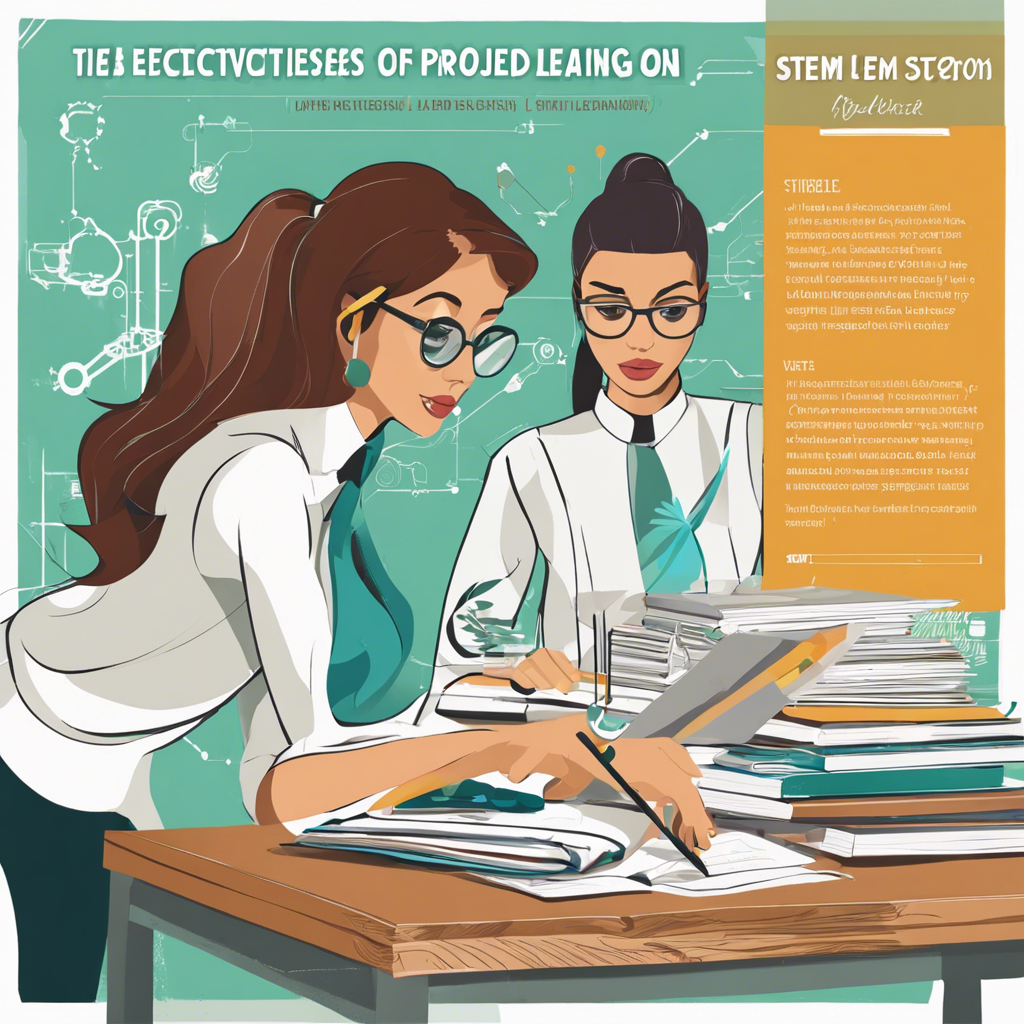Exploring the impact of project-based learning in STEM education and its potential benefits for students’ engagement and skill development.
Project-based learning (PBL) has emerged as a powerful pedagogy in STEM education, offering a departure from traditional teaching methods. By immersing students in authentic, challenging projects, PBL aims to foster deep learning, critical thinking, and practical skills. This educational approach encourages active student engagement, promoting a more profound understanding of STEM concepts through hands-emerged-on experiences. As the demand for STEM professionals continues to rise, PBL is increasingly recognized as a strategic method to prepare students for the complexities of real-world problems and innovative solutions.
The Power of Project-Based Learning in STEM
It is a student-centered approach that offers a dynamic shift from conventional teaching methods. Instead of passively receiving information, students become active participants in their learning journey. They engage with complex, real-world challenges, fostering a deep understanding of STEM concepts and their practical applications. This method not only enhances problem-solving and critical thinking skills but also nurtures creativity and collaboration, preparing students for the demands of modern STEM careers.
Research shows that students who participate in PBL often demonstrate higher motivation and engagement, as they see the immediate relevance of their learning to real-world scenarios. Moreover, PBL can help bridge the gap between theory and practice, enabling students to apply STEM principles in meaningful ways. For example, students might design and build a sustainable garden, exploring environmental science, engineering, and mathematics in a tangible and rewarding project [^1^].
Key Benefits of Project-Based Learning
Enhancing Critical Thinking and Problem-Solving Skills
Project-based learning environments provide a rich context for students to develop these essential skills. They are challenged to identify problems, analyze information, and devise creative solutions, often through trial and error. The iterative nature of projects encourages students to think critically, make informed decisions, and reflect on their learning process.
A Case Study in Project-Based Learning
Consider a project where high school students are tasked with designing a water filtration system for a developing community. They must research water purification methods, understand the local community’s needs, and create a functional, cost-effective solution. This project demands critical thinking, problem-solving, and the application of STEM knowledge in a real-world context [^2^].
Key Learning Outcomes
- Understanding the importance of water purification and its impact on health.
- Applying scientific principles to design an effective filtration system.
- Developing empathy and considering cultural and social factors in project design.
Promoting Collaboration and Communication
Collaborative learning is another cornerstone of PBL. Students are often grouped into teams, mirroring the collaborative nature of modern workplaces. Through collaboration, they learn to communicate their ideas effectively, negotiate, and leverage the strengths of their peers. These skills are invaluable in STEM fields, where teamwork is essential for success.
Integrating Technology and Innovation
Technology often plays a vital role in PBL, enabling students to access information, collaborate, and create innovative solutions. Digital tools, from simulation software to 3D printers, can enhance the learning experience and prepare students for the technology-rich STEM industries. For instance, students might use coding to automate a process or 3D modeling to design a prototype, bringing their ideas to life in new and exciting ways.
Real-World Relevance and Career Preparation
PBL provides a bridge between the classroom and the professional world. Students tackle projects that mirror real-world challenges, allowing them to experience the complexities and rewards of STEM careers. This preparation can be invaluable in helping students make informed decisions about their future education and career paths.
Q&A: Answering Common Questions
How does Project-Based Learning differ from traditional teaching methods?
Project-based learning contrasts traditional teaching by emphasizing student-led, inquiry-based learning. Instead of lectures and memorization, students engage with complex projects, applying knowledge to solve real-world problems. This method promotes deeper understanding, critical thinking, and practical skills.
Are there specific STEM subjects more suited to Project-Based Learning?
While PBL can be adapted for any STEM subject, it is particularly effective in interdisciplinary projects. For instance, a project might blend biology, chemistry, and engineering to address environmental challenges, offering a holistic learning experience.
How can educators ensure the success of Project-Based Learning in their classrooms?
Success in PBL requires careful planning, clear learning objectives, and supportive resources. Educators should provide structured guidance while allowing students the freedom to explore and learn from their experiences. Regular feedback and reflection are essential to help students stay on track and maximize their learning.
Conclusion
Project-based learning represents a dynamic and engaging approach to STEM education, offering numerous benefits for students’ learning and development. By immersing students in authentic projects, PBL fosters a deep understanding of STEM concepts, cultivates essential skills, and prepares students for the challenges and opportunities of STEM careers. As educators continue to explore innovative teaching methods, project-based learning will undoubtedly play a significant role in shaping the future of STEM education, inspiring a generation of critical thinkers and problem solvers.
References
[^1^]: [Environmental Science Projects for Students](https://www.sciencebuddies.org/stem-in-action/project-ideas/envsci/water-filtration-system)
[^2^]: [Project-Based Learning in STEM Education](https://www.edutopia.org/article/project-based-learning-stem-education)
Recommended External Links
1. Project-Based Learning 101
2. 5 Keys to Rigorous Project-Based Learning
3. Project-Based Learning in STEM Classrooms
